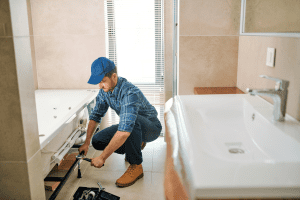
10 Simple Ways to Take Control of Your Finances in 2025
As we step into 2025, taking control of your finances is more important than ever. With rising living costs and

As we step into 2025, taking control of your finances is more important than ever. With rising living costs and

Australia’s coffee culture is deeply ingrained in the daily routines of millions, with cashless coffee shops becoming an increasingly popular

In an unexpected revelation, NDIS and Government Services Minister Bill Shorten recently announced that $241 million in Medicare funds remain

No-ground evictions — where landlords evict tenants without providing a reason — are a contentious issue in housing law, creating

The Australian food and grocery industry is a complex and dynamic sector, shaped by the interplay between large retailers, small

Bathroom renovations can be a smart investment, offering the potential to enhance both the functionality and value of a property.

As we step into 2025, taking control of your finances is more important than ever. With rising living costs and

Australia’s coffee culture is deeply ingrained in the daily routines of millions, with cashless coffee shops becoming an increasingly popular

In an unexpected revelation, NDIS and Government Services Minister Bill Shorten recently announced that $241 million in Medicare funds remain

No-ground evictions — where landlords evict tenants without providing a reason — are a contentious issue in housing law, creating

The Australian food and grocery industry is a complex and dynamic sector, shaped by the interplay between large retailers, small

Bathroom renovations can be a smart investment, offering the potential to enhance both the functionality and value of a property.
© 2025 2 Ezi. All Rights Reserved.